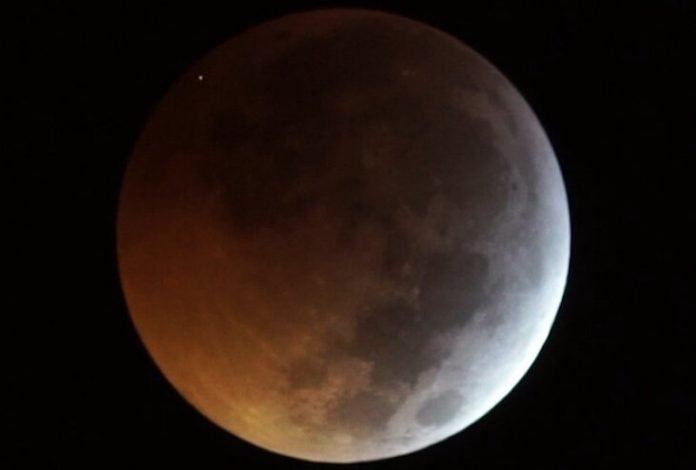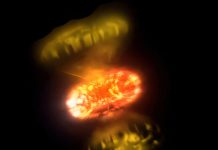
In a new study, scientists have discovered that a meteorite hit the lunar surface with a speed of 61,000 kilometers an hour during the January’s total eclipse of the Moon.
The space rock collided with the Moon, excavating a crater 10 to 15 meters across.
The research was conducted by Spanish astronomers from the University of Huelva and the Institute of Astrophysics of Andalusia.
Previous research has shown that the Moon has no atmosphere to protect it from meteorite hit.
Even small rocks can hit its surface and the impacts can take place at huge speeds.
Many space rocks are immediately vaporized and produced an expanding plume of debris that can be detected as short-duration flashes.
During their observation of the total eclipse of the Moon on 21 January 2019, the team found a short-lived flash as a meteorite hit the lunar surface.
They used the Moon Impacts Detection and Analysis System (MIDAS), which includes eight telescopes in the south of Spain to monitor the lunar surface.
The video footage from MIDAS recorded the moment of impact. The flash lasted 0.28 seconds, and it is the first time scientists film such an event during a lunar eclipse.
After conducting an analysis, the team believes the space rock hit the Moon very fast and created a big crater.
They suggested the impact energy was as equivalent to 1.5 tonnes of TNT, enough to create a crater up to 15 meters across.
In addition, the flash was brighter than most of the events normally detected by the survey.
The team suggests that it is impossible to reproduce these high-speed collisions in a lab on Earth.
In the future, they will keep monitoring meteorite impacts on the lunar surface.
The authors of the study are Prof Jose Maria Madiedo of the University of Huelva, and Dr. Jose L. Ortiz of the Institute of Astrophysics of Andalusia.
The study is published in Monthly Notices of the Royal Astronomical Society.



